Denon AVR-X6700H Reviewed at $2,499.00
Product Name: Denon AVR-X6700H
Product Description: 11.2 CH 8K AV Receiver
-
Design - 9/10
9/10
-
Audio Quality - 9.4/10
9.4/10
-
Inputs / Ports - 9.3/10
9.3/10
-
OS, Apps and Features - 9.2/10
9.2/10
-
Price / Quality - 8.9/10
8.9/10
Summary
Reviewed at $2,499.00
Pros
- Breathtaking performance
- Carefully selected materials and internal components
- Huge list of features and extras
- A lot of connectivity options to choose from
Cons
- HDMI 2.1 bug present in some older units
- Only 1 HDMI 2.1
- Same old design
- Missing features of some newer releases
Cheapest Places to Buy :
*We are a reader-supported website. When you buy through links on our site, we may earn a small affiliate commission at no extra cost to you. Home Media Entertainment does not accept money for reviews.*
It’s been a few months now that Denon has launched their new upgraded AV receivers but if you look closely at the new units you will immediately notice that there are two categories, for 11 and 13 channels, where no new units appeared. And in our Denon AVR-X6700H review today we will be looking at one of the two previously released models that Denon decided to keep in the market just for this reason.
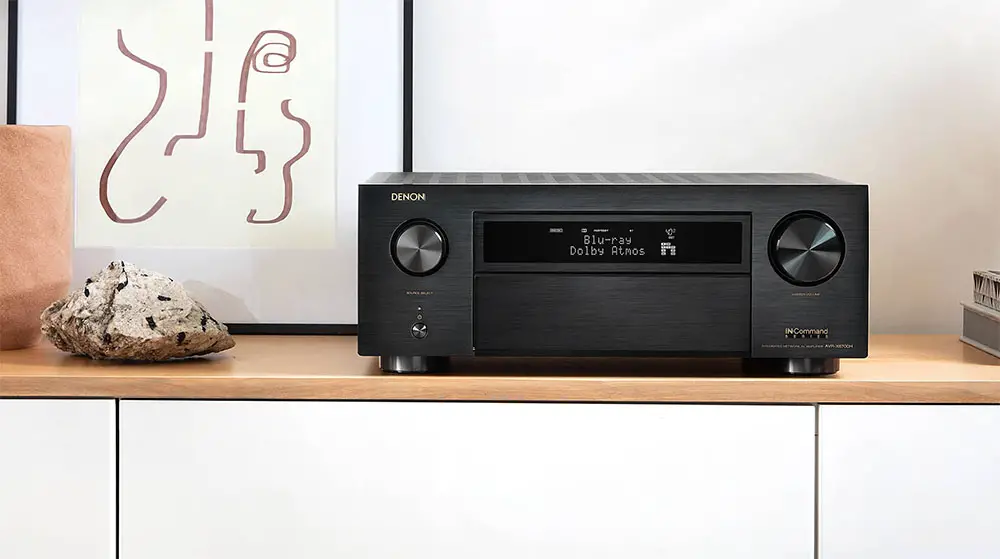
With both the AVR-X2800H and AVR-X3800H releasing late last year and the AVR-X4800H coming recently, only Denon’s AVR-A1H behemoth remains to complete their latest refresh. But it seems that for the 11 channels category Denon is keeping their X6700H model while in the 13 channels category there is the X8500H still available in the market. These two units did not get an update and probably we will have to wait until their next refresh so they will remain relevant for one more year at least.
So, before we start our analysis let’s go over the specs real quick to see what this one has to offer. The AVR-X6700H is an 11.2 channels AV receiver that can extend up to 13.2 channels with an external amp. In terms of audio support we get Dolby Atmos, DTS:X. DTS:X Pro, IMAX Enhanced and Auro-3D. There are also Dolby Surround and DTS Neural:X up-mixing technologies along with Dolby Atmos Height Virtualization and DTS Virtual:X virtual technologies, Audyssey MultEQ XT32, High Resolution Audio, HEOS and Airplay 2, voice control and custom integration, USB, online and upgraded Bluetooth streaming capabilities.
Last but not least is the inclusion of HDMI 2.1 which brings 4K@120Hz and 8K@60Hz pass-through, ALLM, VRR, QMS, QFT and eARC but as with the rest of the first generation of HDMI 2.1 releases it comes with the usual problems we have talked about before and we will analyze in the appropriate section. So without further delay let’s start our analysis.
Design
The unit comes with the usual Denon look to it and to be honest comparing it to its predecessor, the AVR-X6500H, there seem to be no changes whatsoever in terms of design, looks and overall footprint. Let’s hope in the next refresh, whenever this may be, we are going to see a new Denon look just like what Marantz did with all their new releases.
The X6700H has exactly the same size of 17.1″ x 15.3″ x 9.3″ (434 mm x 389 mm x 236 mm) as the AVR-X4700H meaning they both use the same chassis, while you can lower the height, by turning the dual antennas in a horizontal position, to a more manageable 6.6″ (167 mm). The unit weights 32.0 lbs (14.5 kg), which is just about the same as the X6500H, making it fairly bulky and heavy and is the kind of receiver that needs ample of space when setting it up.
The receiver can get hot, really hot to be honest and in most similar situations we always suggest you buy special cooling in order to keep the temperatures down even if you are not planning on placing it in a confined space. Ideally for such a large AV receiver we always recommend some kind of active cooling solution like the AC Infinity AIRCOM T8 to keep the temperatures and your worries at low levels. Just make sure to choose the right cooling solution for you as there are front, top and rear exhaust options available.
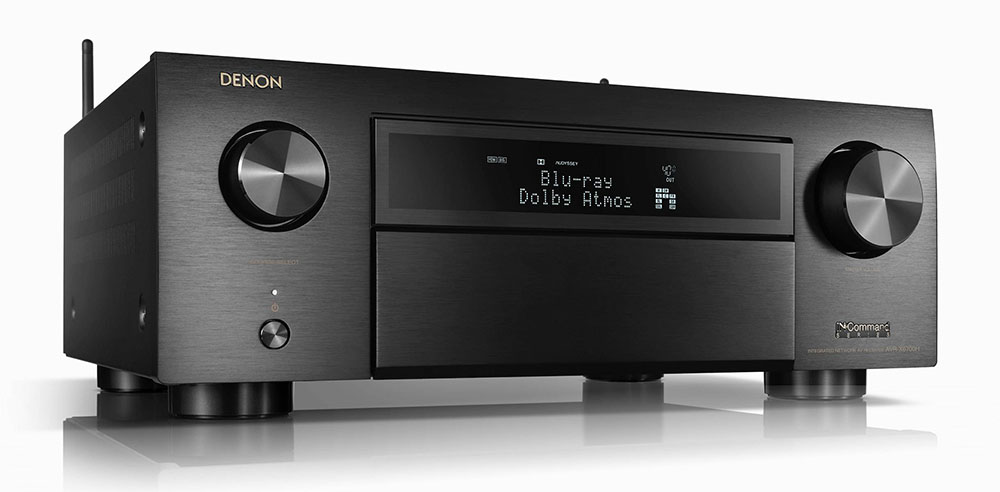
Keeping with the unit’s more premium status the X6700H is using a metal front panel instead of a plastic one we see in the mid and lower tier Denon units. At the front face we get the usual large central display, which by the way uses a 2-line FLD, with two big knobs on each side for volume and input selection. Under the left knob we get a single power button while everything else is hidden behind a flip-down door. The buttons hidden under it are exactly the same we had seen before.
The buttons we do get are used for Zone 2 and Zone 3 control, navigation buttons as well as quick selection buttons. We also get an HDMI input, a USB port, the calibration microphone port and the usual headphones jack. All Denon receivers have long abandoned the front analog ports and the same happened recently with the front HDMI inputs. Thankfully the X6700H is one of the few units that still retains one. Hopefully Sound United will reconsider to bring this back in all their future releases.
Let’s take a look at the insides now and with the AVR-X6700H belonging on the upper tiers we find some interesting hardware that surely makes this unit very special. As usual, we get high-current discrete power amplifiers with low-impedance drive capability but the X6700H comes with a mono block power amp construction which in theory is far more efficient than the ones used in the cheaper units.
Dual SHARC+ core DSP chips take on processing duties while in terms of DACs things are a bit more confusing. Initially the X6700H was using AKM DACs but the fire in the AKM factory caused major shortages so after some point Denon, and many other manufacturers, had to switch to a different brand so some newer models seem to go for a Texas Instruments DACs instead.
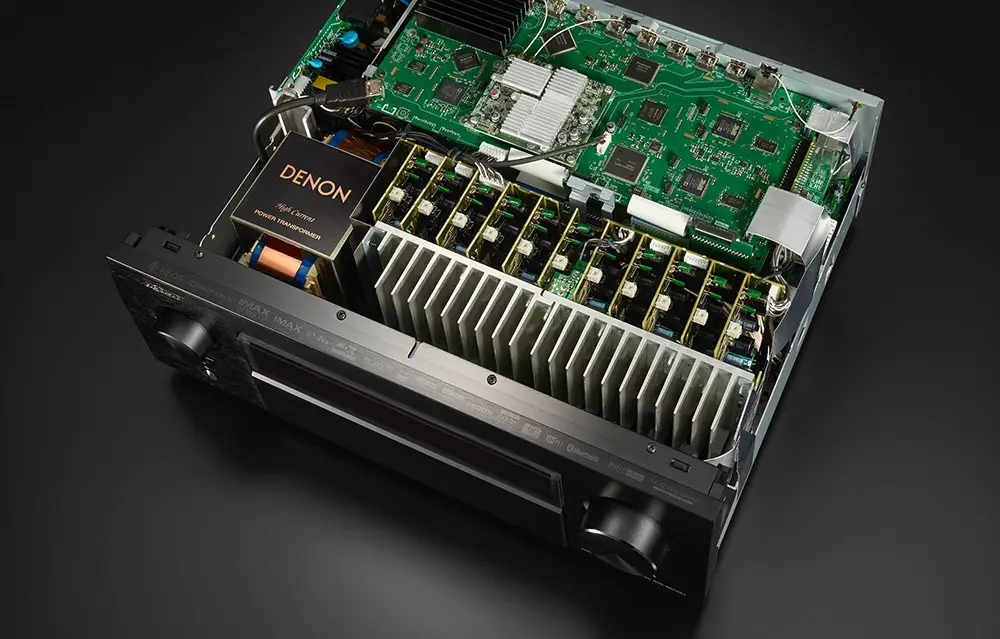
Furthermore the X6700H comes with AL32 processing. AL32 Processing, a Denon proprietary analog waveform reproduction technology, supports up to 192 kHz sampling frequency and 32bit expansion on your receiver. The technology thoroughly suppresses noise associated with D/A conversion to reproduce low-level signals with optimum clarity and bring out all the delicate nuances of the music. AL32 Processing Multi-Channel means the technology is applied on all channels and all input sources.
Additionally the X6700H uses Denon’s D.D.S.C. -HD32 technology. This stands for Dynamic Discrete Surround Circuit and means that all stages in the audio processing are discrete and not combined chipsets. This way Denon can select exactly the components they want in order to produce the audio output they desire.
Last but not least the receiver comes with a Clock Jitter Reducer. If there is jitter in the clock that serves as the reference for D/A conversion, the reproduced waveform will be blurred and an accurate sound cannot be produced. The Clock Jitter Reducer compares the phase of the input and output signals to reduce jitter.
As for the remote, this is exactly the same one used in the X4700H. Code named RC-1240, the remote has the same brushed metal finish look on top while it comes fully packed with control buttons. The buttons are fairly good organized and separated into groups but their size is a bit small for our liking while they are fairly close to each other making it a bit harder to avoid pushing the wrong one.

Missing a backlight is also not helping either as with so many buttons pressing the wrong one in the dark will certainly add more frustration. It’s a real shame not to have a backlit remote when you consider the amount of money you have to pay for such a unit. But as the new Marantz units do feature a backlit remote we can only hope that when Denon refresh their lineup a motion sensing remote will be introduced. We can always dream, right?
Although the AVR-X6700H belongs in the previous generation of AV receivers it still features many of the same top quality hardware we find in Denon’s most recent releases. Quality wise this unit is at the top of its game and when you look at the craftmanship and attention to detail in its internal components, you can understand why this is considered one of the best AV receivers in the market today.
Audio Quality
The receiver supports the usual Dolby Atmos and DTS:X object oriented audio tracks, along with DTS:X Pro in order to support the extra channels of this receiver, but as with all top-tier units we also get Auro-3D and IMAX Enhanced support. The last two are not so usual and you are not going to find much content for them but it is always good to have more which adds more value overall. Along with these we get support for up-mixing and virtual technology features in order to cover all needs and specific room configurations.
When it comes to up-mixing tech we find the usual Dolby Surround and DTS Neural:X. What these up-mixing tech are doing is to up-convert stereo and legacy mixes in order to make use of all the speakers you have in your setup. As for virtual tech the Dolby Atmos Height Virtualization and DTS Virtual:X are capable of creating sounds that originate from virtual created speakers around your room where there are no physical speakers present.
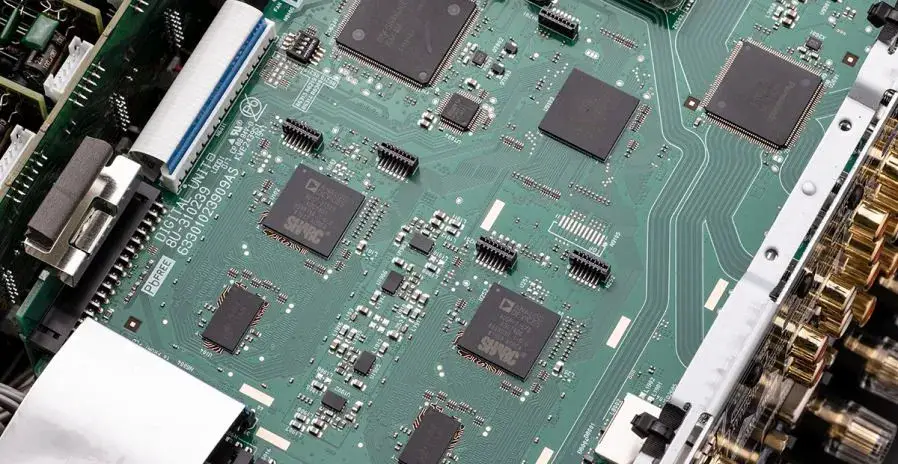
This virtual tech obviously is not as good and accurate as having real physical speakers and are very much room dependent. Also the sound many times can be heard very over-processed something we were never very fond of.
Keep in mind that since the X6700H belongs in the previous generation of AV receivers it lack a few features that the new units support including 360 Reality Audio and MPEG-H. Hopefully these will be included in the next refresh of this unit.
The X6700H comes with 11 channels of built-in amplification and each channel can output 140 watts of power (8 ohm, 20 Hz – 20 kHz, 0.05% 2ch drive) but keep in mind that this is only for 2 channels meaning that when all 11 channels are active this number goes down considerably. You have the ability to go all the way to 13 channels but for that you will need an external amp to drive the last two channels.
With the built-in amplifiers you can go all the way for a 7.2.4 channels audio setup with four dedicated overhead speakers for maximum immersion. For our tests we went for a 5.1.4 setup using a single subwoofer and 4 height speakers placed at the front and back of our viewing area.
For this review we used the 4K UHD version of Independence Day: Resurgence which comes with a mind blowing Dolby Atmos mix. The sequel certainly leaves a lot to be desired compared to the first film but when it comes to its technical merits it is surely reference material.
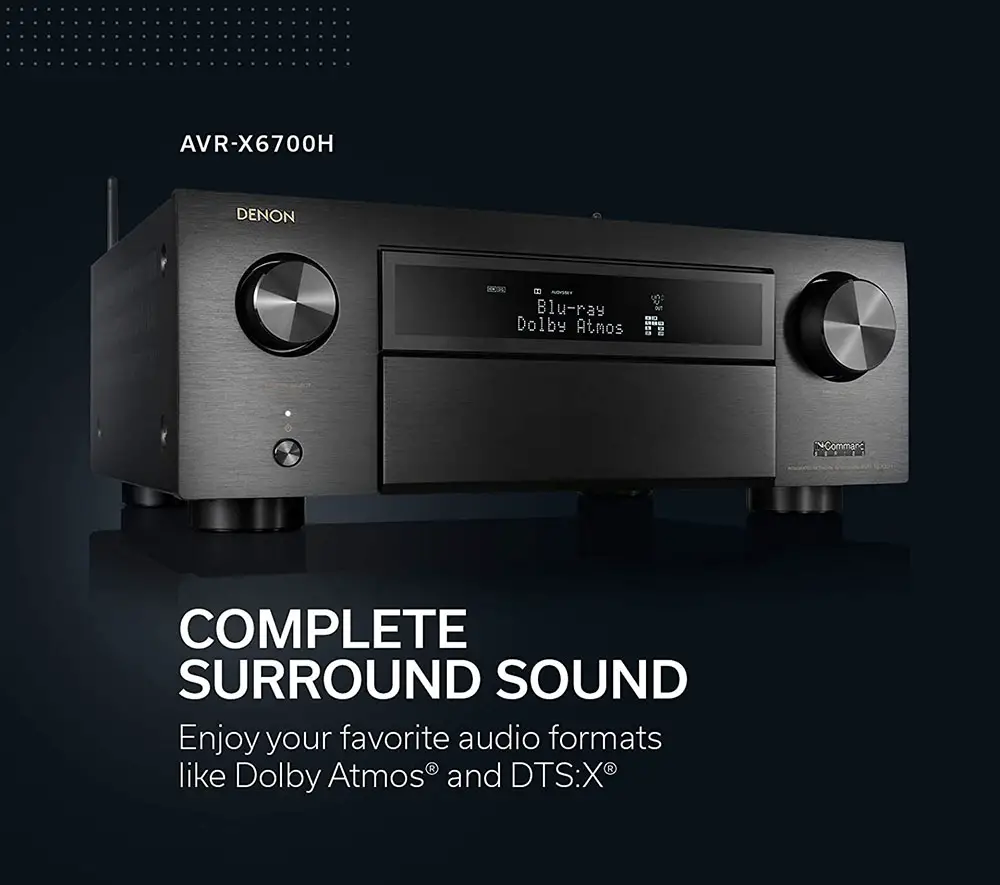
Even with such a demanding mix the receiver had no trouble rendering everything with notable quality and attention to detail. The front sound stage was really powerful with amazing extension and realistic depth. The three main channels had excellent separation with the two main front channels doing their own thing while the center one kept all dialogue nicely isolated and without any overlapping.
With such a film surround effects really overwhelm you and the Denon made sure to output everything with exceptional precision and separation. Panning effects would travel across our testing area with pinpoint accuracy and no audible delays. This was very much evident when fighter jets were fighting the alien spaceships with missiles, projectiles and cannon fire traveling all around us. We could very well describe it as perfect by our humble standards.
On the same level of excellency were the Atmos effects. With four height speakers the overhead layer came to life with plenty of activity. Sound effects above our heads had very good leveling and height. They were not so much to the face and mostly complemented the rest of the action. As a result of their great accuracy they filled that space successfully, that would otherwise feel empty.
On the lower end, such a film is no short of explosions and destructions. When the alien motherships destroy the human cities our subwoofer sent massive sonic waves towards our viewing position while the walls seem to be handling the shaking with skepticism. The receiver needs a good subwoofer to make its time worthwhile but if you have or planning to buy a good one prepare to hold on the edge of your seat plenty of times.
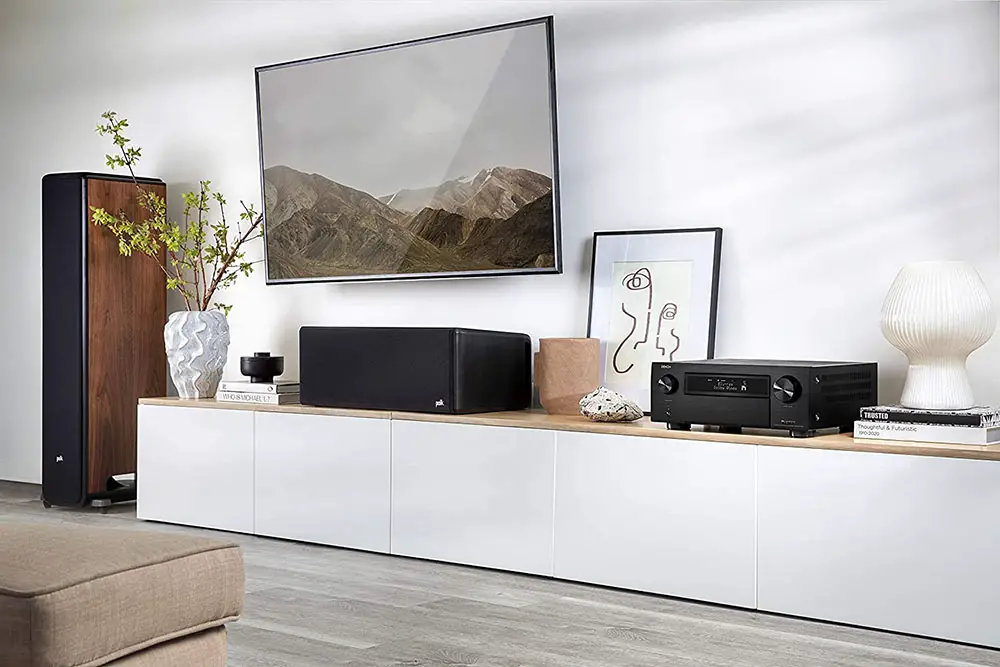
We tried to push the volume to less than desired levels and we never managed to push the receiver near its maximum level making it ideal for medium and large sized areas or if you like to make your neighbors angry. If power output is your concern the X6700H has you covered.
To sum everything up, the receiver’s cinematic capabilities are truly remarkable. We couldn’t find a single flaw during out testing and this shows that if you are really serious about the kind of immersion you want to achieve in your home theater the X6700H is a unit that can guarantee that you will get exactly what you seek.
High Resolution Audio has become the standard in these receivers so except from the usual low quality MP3, WMA and AAC the unit can also playback FLAC, ALAC and WAV files up to 192 kHz / 24-bit as well as DSD for both 2.8 and 5.6 MHz. In our case, as we always do in our reviews, we selected a few music tracks in FLAC format that we streamed through the USB port of the receiver for the best possible quality.
Last part of our tests is music so we switched to a 2 channels setup and got some tunes to see what the X6700H can do with music content. For this we used the front USB to playback some favorite songs in FLAC format for the best quality possible.
As we always say in our reviews, it is very important what speakers you are going to use with each AV receiver in order to be able to take advantage of all its qualities and the AVR-X6700H can really do miracles if you know how to handle it.
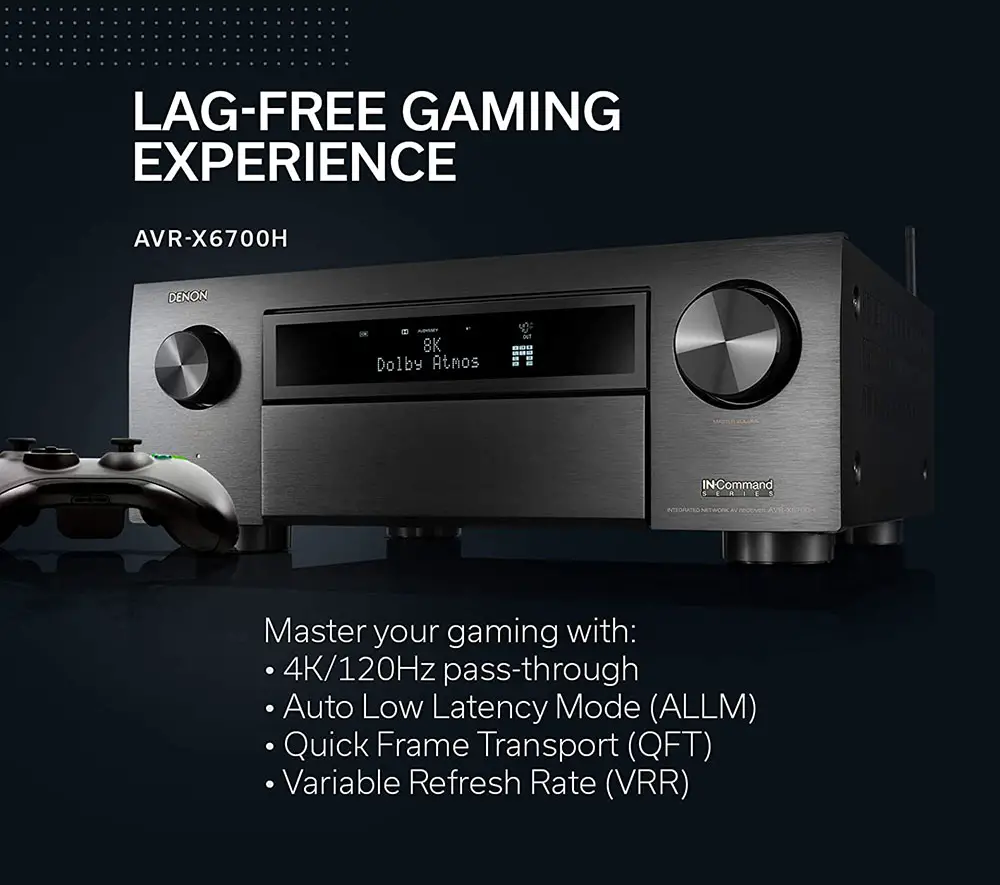
The kind of performance we got was simply breathtaking. Everything would be rendered to the highest of details with plenty of resolution and noteworthy articulation. The mid-range was rock solid and kept everything coherent while the higher end was full of energy and passion. You could feel this energy flowing through our testing area as the Denon kept rendering everything with exceptional mastery.
Bass was another area where the X6700H does not lack at all and although again it really depends on the kind of subwoofer, or subwoofers, you have the Denon made sure to pass all low end information to our testing unit pure and raw.
We put the receiver through various genres just to see if its behavior would show any alterations but like a dedicated soldier the X6700H remained focused on delivering the most pure experience an AV receiver is capable of.
No matter how many words we write here it will never give you the whole picture of how the Denon can really do. Obviously its performance is not on the same level as a dedicated music setup with separate amplifiers, but to be honest it is damn close and this shows how much value you can get out of a single box like this one.
Ports and Connectivity
Next we will be looking at all the available ports the unit comes with. We already mentioned above that under the flipping-down door at the front we got a headphones jack, the Audyssey microphone port, a USB port and an HDMI input.
Looking at the back side now, we find 13 speaker terminals but as the receiver has only 11 discreet amplification channels you never use all 13 terminals at the same moment. For a 13.1 channels setup you will need to use an external 2 channels amplifier. We also get 7 HDMI inputs (not including the front one) and an impressive 3 HDMI outputs.
Unfortunately, as with most 2020 Denon AV receivers, from the 7 HDMI inputs only one is HDMI 2.1. The new port brings with it a vast range of existing and new features that includes 8K/60Hz and 4K/120Hz pass-through capability, 4:4:4 Pure Color sub-sampling, Dolby Vision, HLG, HDR10, 21:9 video, 3D and BT.2020 pass-through, HDR10+, Dynamic HDR, ALLM, VRR, QMS, QFT, ARC, eARC, Auto LipSync and HDMI-CEC.
Now there is another thing you need to know about the HDMI 2.1 ports being used in all 2020 Denon receivers including the AVR-X6700H. If the receiver was manufactured before May 2021 the Panasonic chip that handles the HDMI 2.1 connection cannot process the signal of specific sources that output at 4K/120Hz RGB signal (8-bit, 10-bit, 12-bit) like the Xbox Series X and this results in a black screen. Now there are not many sources that currently support 4K@120Hz with this exact configuration but this is purely a hardware issue and cannot be solved by a simple firmware update.
Now if you are wondering, the X6700H has no problem whatsoever if you are watching movies or playing games at 4K/60Hz and 4K/120Hz YCbCr 4:2:2 signals (32Gbps) or anything below that so in most cases you are going to be absolutely fine. This means that the PS5 will work without any problems. In the rare case where the receiver accepts a 4K/120Hz RGB signal (8-bit, 10-bit, 12-bit), like from the Xbox Series X for example, this is when this problem will appear.
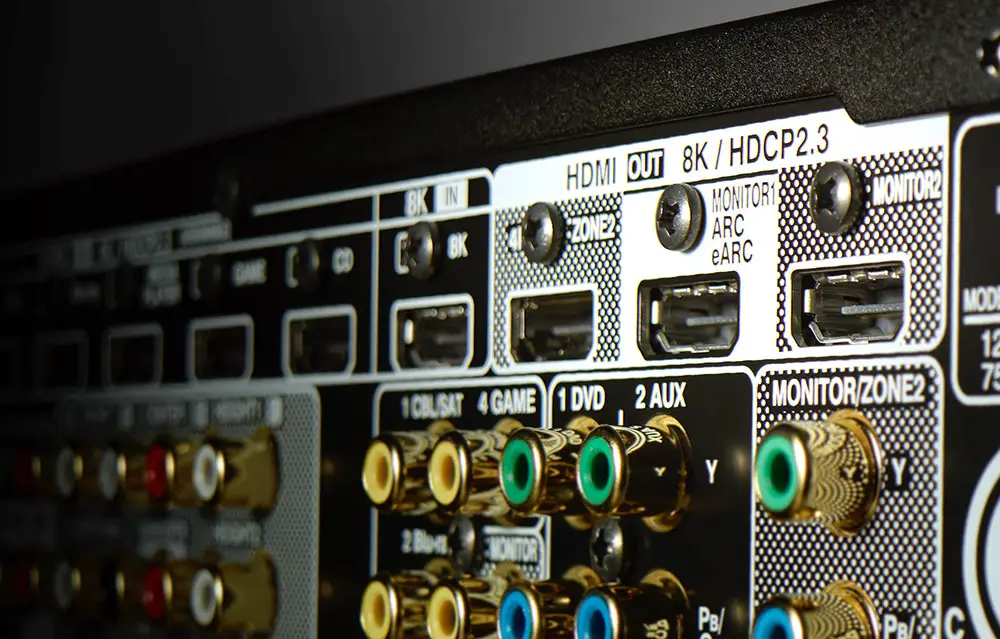
Sound United had announced that most Denon and Marantz AV receivers that were manufactured after May 2021 would come with an updated HDMI 2.1 chip that doesn’t have this problem. But if the receiver was manufactured before this date it probably has the original HDMI 2.1 chip which means this would need a different solution. For those pre-May 2021 receivers what Sound United has decided to do is offer, free of charge, an HDMI adapter called SPK618 that is handling the HDMI input signal and converts it in one that these receivers can handle. As such the X6700H, with the use of this adapter, can accept even signals from the Xbox Series X without any problems.
Now, in order to know if the X6700H you have, has the old or updated HDMI 2.1 chip there are actually two ways. The most obvious one is to connect an Xbox Series X and see if you get a black screen or not. But you can determine this by the serial number of the receiver also. Sound United stated that all models that end with 70000 and onwards are free of this bug and you should in theory be ok.
But in case your receiver is older then you can head to Denon’s website and fill in the form to receive this adapter for free. The receiver we had for testing was a newer model so it didn’t have the HDMI 2.1 bug and thus both PS5 and Xbox series X would worked flawlessly with 4K@120Hz signals while VRR could also be used if a game supported it. During playtesting it we didn’t notice any HDMI handshaking or signal loss so everything seemed to be good with this one.
As for everything else we get 6 analogue stereo inputs, 1 dedicated analogue input for Phono, 4 composite video inputs and 2 outputs, 2 component video inputs and 1 output, 13.2 multichannel Pre-Outs, Zone 2 and Zone 3 analog outputs, 2 digital coaxial audio inputs and 2 optical ones, an Ethernet port, 1 remote control input and 1 output, an RS-232C port, 2 12V trigger ports, the usual FM/AM ports as well as dual WiFi and Bluetooth antenna connectors.
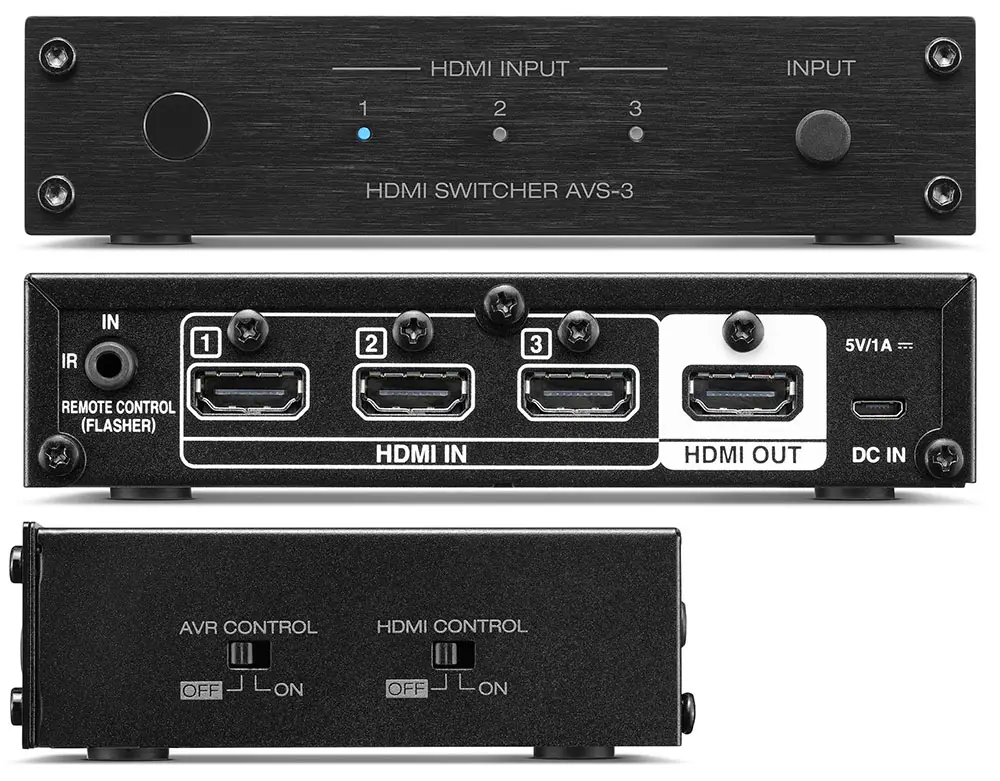
Wireless connectivity seems to be the same as all its other 2020 releases as it has built-in WiFi that supports both 2.4 and 5GHz as well as Bluetooth for streaming audio as the receiver comes with v4.2.
The most obvious weakness of the X6700H is the single HDMI 2.1 input. Other than this the receiver has plenty of connectivity options and to be honest it will be surprising if you even use half of them. If you need more HDMI 2.1 ports then your options are actually two. Either look for one of the new 2022/2023 releases that come with more or, if you definitely want a 11 channels AV receiver, buy the X6700H along with the separate adapter that Sound United created that includes 3 HDMI 2.1 inputs for you to use, code named Denon VS3003 pictured above.
OS, Apps and Features
The receiver comes with the full feature set that Denon is using in all the receivers. As such we don’t find any meaningful differences compared to the rest of their lineup although there are certain differences compared to the newer released AV receivers that came out a few months ago and we will talk about shortly.
First of all we will talk about the audio calibration system. Denon is using the Audyssey system and as with all manufacturers they scale it accordingly to meet the price and performance standards of each of their models. For the X6700H we get the Audyssey MultEQ XT32 version which is their best and most feature complete suite. In comparison this one features the highest resolution filters which can result in higher accuracy during calibration.
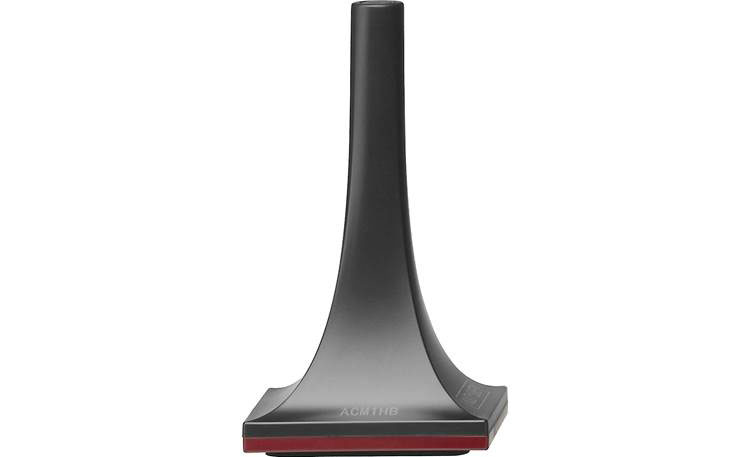
The Audyssey MultEQ XT32 also comes with Dynamic Volume, Dynamic EQ, Audyssey LFC and Audyssey sub EQ HT. This version of Audyssey has the ability to analyze up to 8 different listening positions with the help of the included microphone and creates precise digital filters in order to offer the best audio result for your particular space.
But except from the core system we also get Dynamic EQ which is a feature that is responsible for keeping the clarity and dynamic levels of audio even when you like to watch at low volume, like for night viewings for example. Dynamic Volume on the other hand is capable of balancing sudden changes and spikes in volume that could appear when there are sudden changes from TV broadcasting to commercials.
There is also Audyssey LFC that uses advanced psychoacoustic algorithms to deliver more full-range balance, including deep bass, without disturbing neighbors or people in other rooms of your home and lastly Audyssey Sub EQ HT that provides individual DSP tailoring of each subwoofer in a dual subwoofer setup for deeper bass with improved definition.
Going through the Audyssey calibration can be done either through the built-in wizard or if you want to dive deeper into calibrating your system then you can download the Audyssey MultEQ Editor app that is available for Android or iOS and do a more thorough setup with the help of your mobile device.

Only keep in mind that this app has a one time fee which is a shame to be honest when you already pay such a high price for the receiver. They could very easily offer some short of coupon for those buying these high tier models as a thank you, but alas Denon does not. As for the built-in system, this is more than enough for most casual users as it offers almost everything you need to make very good and precise adjustments to your system.
Here we need to mention that the X6700H lacks future support for Dirac Live that many of the newer AV receivers support. So Audyssey is your only option here.
But Denon provides another app for this AV receiver and this one comes completely free. The Denon 2016 AVR Remote app, as it is called, lets you control the unit with your mobile device through a nice visual interface. If you are tired of the included remote this is a nice and most important free alternative. The app is available for both Android and iOS devices so we suggest you give it a try to see if you like it.
Another area where the X6700H shows its age is with its user interface as the one we get is the older one with 480p resolution and not the refreshed one that the new releases have. It’s not a big deal obviously as all settings and functions are more or less the same but for such a high profile unit looking at such old style graphics does feel odd. Thankfully Sound United have updated the UI in all new releases and we are not going to see these outdated menus anymore.
As for the rest, the receiver comes with the usual streaming as well as multi-zone capabilities that Denon includes in almost all their units. As it supports both HEOS and Airplay 2 you can either stream music online from one of the available online streaming services that include Spotify Connect, Pandora, Amazon Music HD, TuneIn, Deezer, SiriusXM and TIDAL among others or create your own multi-room environment with the use of appropriate wireless speakers.
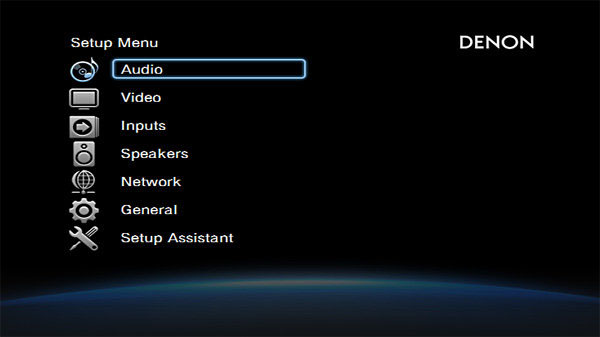
Both the HEOS and Airplay 2 apps are available for downloading from their appropriate stores for use with your mobile device. But if you prefer a wired connection the AVR-X6700H also supports Zone 2 and Zone 3 through either its dedicated pre-outs or one of the HDMI, composite or component ports.
Now as far as streaming, online is not the only option you have as you can stream audio from a network drive or NAS server if it happens you to have one connected to your local network. Also with the included USB port you can stream music through some connected external storage or flash drive.
Lastly if you prefer a more wireless way of streaming your music there is Bluetooth available for connecting with your mobile device. If you use Apple devices then Airplay 2 can also be used to stream music wireless through it.
And since we mentioned Bluetooth another function that is included in the X6700H and seems to have become a standard is that the receiver can output audio in two different ways using its Bluetooth transmitter. The X6700H is capable of streaming audio to Bluetooth enabled headphones for a completely silent house experience or it can also output sound from both its speaker terminals and to a Bluetooth headset. This can be particularly practical in case there is a member in the family that is hearing impaired.
But keep in mind that this can be used only for music and not for movies. And this happens because the Bluetooth transmitter of the AV receiver is using only the SBC codec and not some more advanced variant meant for such use, like aptX Low Latency. As a result there is bound to be an audio delay due to the Bluetooth transmission speed making this feature ideal for music use only.
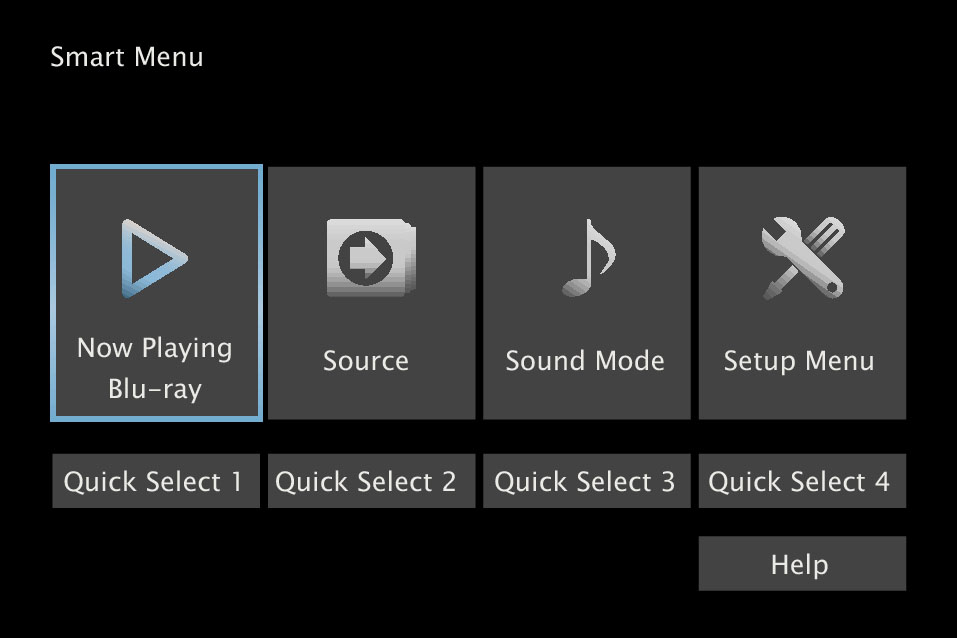
Denon is known for including all known voice control platforms to most of their models and the X6700H is not any different in this regard. As such there is support for both most known ones with Amazon Alexa and Google Assistant but there is also support for Apple’s Siri through the Airplay 2 app and the advanced automation system Josh.ai making this receiver feature complete in this regard.
Another handy feature that we do find is HDMI-CEC and this one lets you use the TV remote to control the AV receiver if the TV also supports this. You can understand the practicality of this as this way you can reduce the amount of remotes you will need to have in your home theater. Obviously this feature lets you use only the most basic functions of the receiver but for everyday use it can be a very time saving one.
There are even more extras and features available so we will try to name as many of them as we can. The receiver supports video upscaling to 8K resolution from both its HDMI and analog ports. We also get an ECO mode that can regulate the receiver’s power usage for a more environmental friendly power consumption as well as being “Roon Tested” certified.
For this last one there seems to be a bit of confusion as there are two types of certifications. Roon Ready and Roon Tested. The AVR-X6700H, as with all Denon AV receivers, is Roon Tested which means while Roon will work on this unit you will not get the highest quality possible. So for example if you use Airplay, audio quality is limited to 16 Bit/44.1kHz. Keep that in mind in case Roon is specifically important to you but you also want your files to be streamed in their original quality.
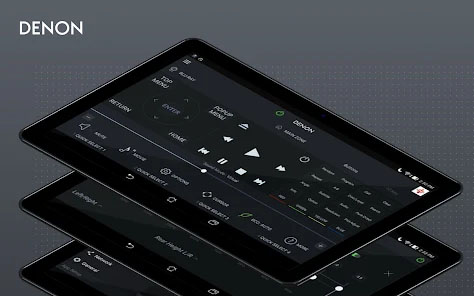
We also get bi-amp capabilities which is a favorite among home theater fans and obviously custom integration. The unit features external RS232, IP and Web control capabilities for easy customization and compatibility with third-party integration solutions. There is also IP control capability for major third-party control devices, as well as Control4 SDPP (Simple Device Detection Protocol) certification for seamless integration with Control4 home automation equipment.
Last feature that needs mentioning is the Pre-Amplifier Mode with which your Denon AV receiver works as a perfect AV pre-processor with the latest HDMI connectivity. Pre-Amplifier Mode provides a cleaner signal path and more tolerance in clipping level by disconnecting internal amplifiers.
Sound United seems to be advertising this a lot but in all honesty we cannot understand what is the big deal with it. Because if someone wants to use separates will most probably buy a processor along with separate amplifiers and not an AV receiver. AV receivers are meant to offer everything in one box, this is their major strength and having such a feature does not make much sense here. But anyway, having this available is not bad. More power to the consumers.
Overall the AVR-X6700H comes fully packed with features and while there are some changes and extras that we saw in the newer releases that are not present in this one the receiver does not disappoint. Probably the only major missing feature is Dirac Live but since Denon doesn’t have a 11 channels AV receiver with this yet you will have to either wait until they refresh this category or live without it.
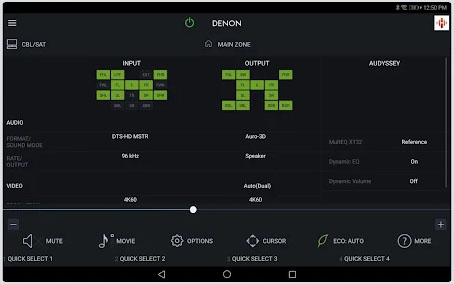
Final Thoughts
Denon may not have been able to refresh the 11 channels category but the AVR-X6700H still remains an amazing AV receiver that has all the ingredients to be a top-tier premium release even after all this time from its initial release. And since there is no other model available here, this one will stay relevant until its upgrade will come at some point in the future.
There are so many good things to say that is hard to put everything in a single paragraph. Its cinematic prowess is unquestionable, its Atmos performance breathtaking, its feature set is one of the most complete ones you can have from a previous generation of AV receivers and its connectivity options leave very little to be desired. Add its top quality and carefully constructed internals and what you have is a real champion.
On the other hand this model is still haunted by the HDMI 2.1 bug and although this has been fixed for newer units some older ones will surely be in circulation for some unlucky buyers. At least Denon offered a solution for those also, showing that even in all this mess they tried to do the best they could with the situation. Also having a single HDMI 2.1 can be a bit of a problem in today’s setups. Denon should also consider refreshing both the main unit and remote while the X6700H is missing a few of the newer features the latest AV receivers come with like 360 Reality Audio, MPEG-H, Dirac Live and 4 subwoofer outputs.
Closing our review we can say that there was no doubt how good of an AV receiver the Denon AVR-X6700H is and during our tests it proved just that. No matter what we threw at it, it handled everything with care and delicacy giving us a performance to remember. Highly recommended.

For more reviews you can check our dedicated 11 channels 8K AV Receiver reviews list or even look at our Product Reviews Table where you can find the brand and specific product you are looking for.
Cheapest Places to Buy :
*We are a reader-supported website. When you buy through links on our site, we may earn a small affiliate commission at no extra cost to you. Home Media Entertainment does not accept money for reviews.*
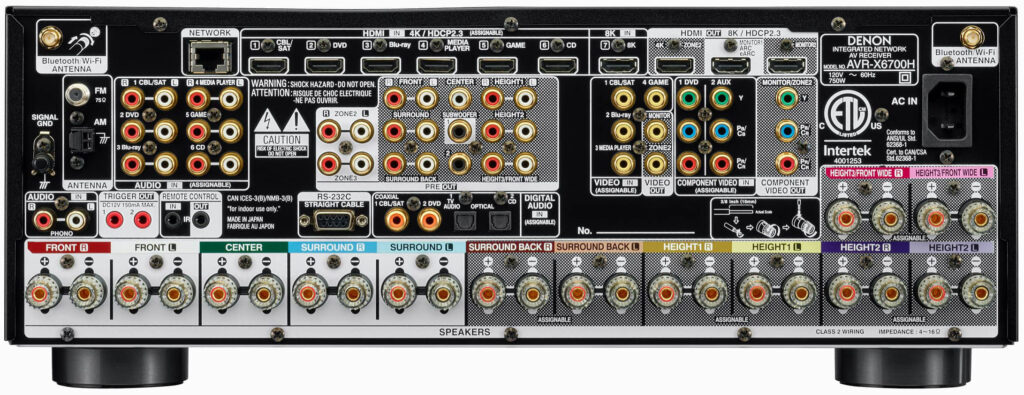
I would love to get the 6700H if I could find one but some weeks ago that I looked for it it was out of stock in most places. You said that the newer units don’t have the HDMI 2.1 bug but how we should know of it if we order online?
Cheers!
Hey Jeremy. Unfortunately there is no way to know unless the retailer can open the box and check the serial number. Your only option is to buy from a shop that accept returns. There is no other way around it.
It’s strange that Denon didn’t release new 11 and 13 channels AV receivers, instead they went for two 9 channels and then for the 15 channels monster A1H. Do you know why? I would love to see a 11 channels receivers with all the new juicy features of the latest releases.
Hello Liam. There is no info as to why Denon decided to keep the 6700H and the 8500H. But usually these top tier receivers are not updated every single year as most of the other units. Most probably these will be updated on the next refresh cycle but we will have to wait for this to see.